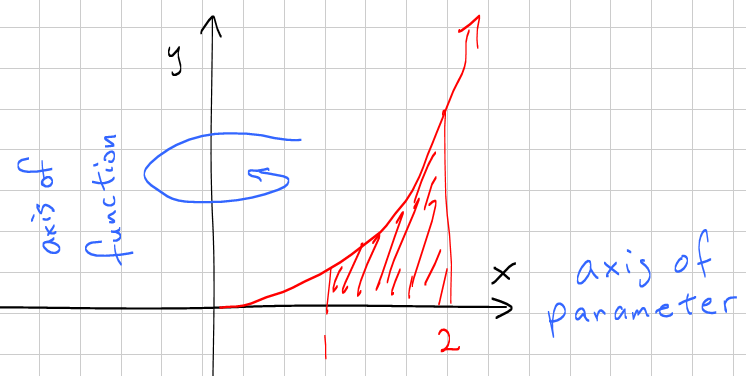How do you find the surface area of the solid obtained by rotating about the #y#-axis the region bounded by #y=x^2# on the interval #1<=x<=2# ?
1 Answer
First of all, you are missing a bound. We will assume that the other bound is
The first step is to determine whether you are rotating along an axis that is parallel to the independent axis or the axis of the parameter (

Always draw a diagram to verify what is the parameter and what is the function.
You should note that
The formula for cylindrical shells is:
#V=int_a^b2pirhdr#
#h# is represented by#y# , we have#y=x^2# and#y=0#
#r# is represented by#x#
#V=int_1^2 2 pi x (x^2-0) dx#
Now that the substitutions are done, we can solve:
#V=2 pi int_1^2x^3dx#
#=2pi (x^4)/4|_1^2#
#=2pi([2^4-1^4])/4#
#=(15pi)/2#

